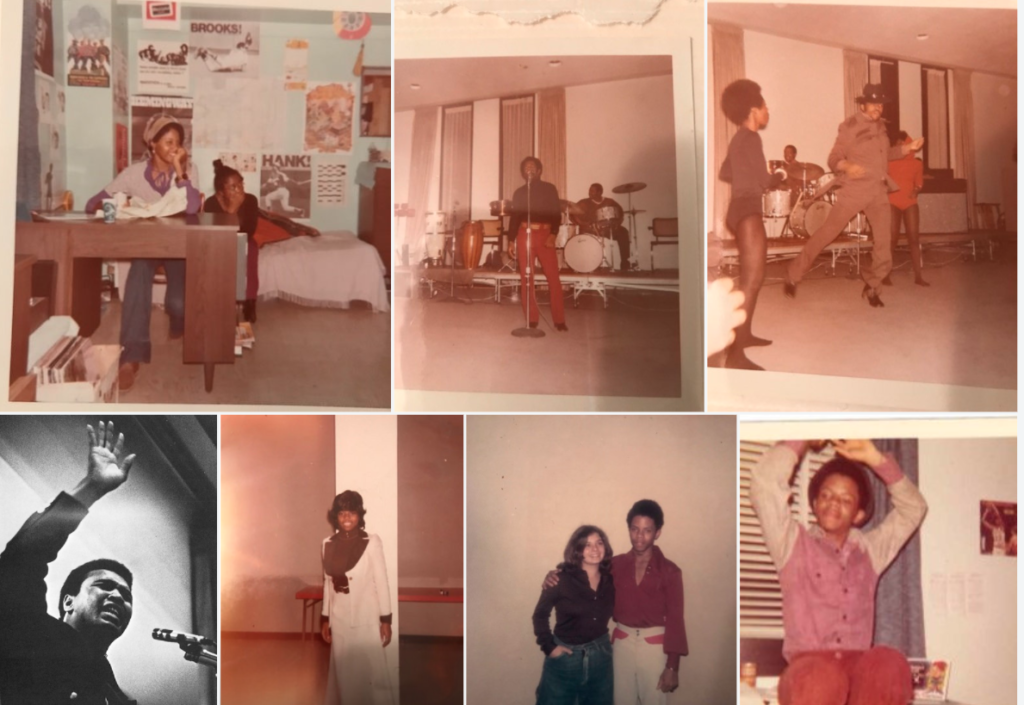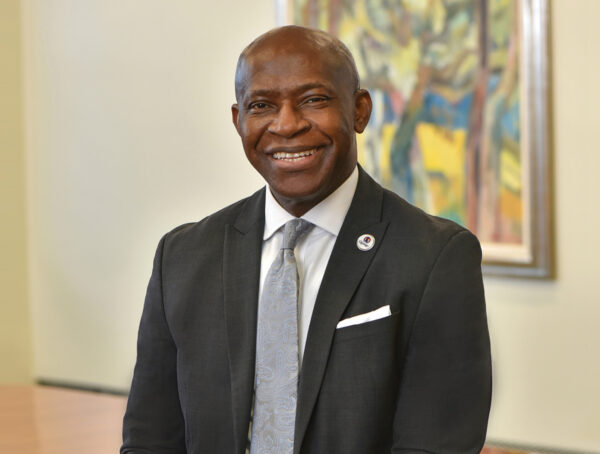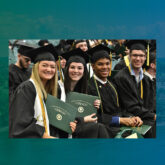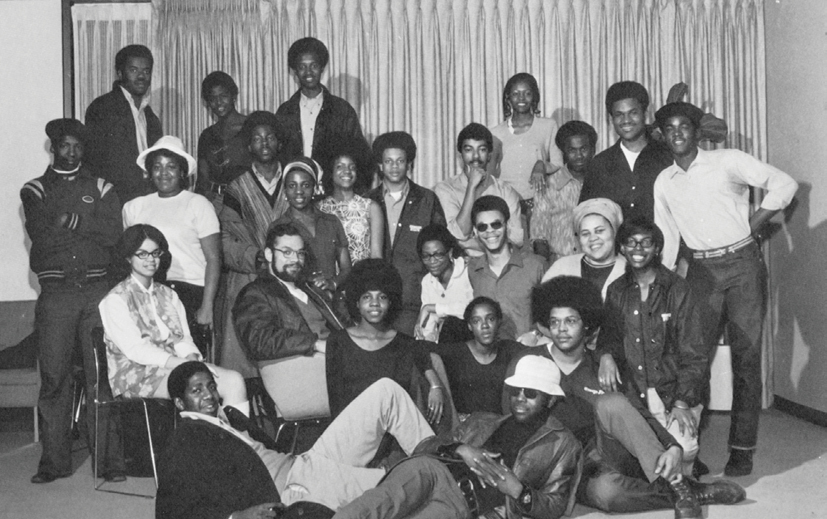
Jim Gordon ’73 arrived at SUNY Oswego in fall 1969, having graduated as the only black student among a class of 36 in his rural Dutchess County (N.Y.) high school. So when he discovered his roommate was white, it didn’t come as a surprise to him.
However, his roommates’ parents had a slightly different reaction.
“Once they got adjusted, they were very nice,” said Gordon, who had the same roommate for three years at Oswego. “They would bring us clams from Long Island.”
Unlike most of the 100 black students entering Oswego that fall, Gordon didn’t come through the then newly-established Educational Opportunity Program, which provides additional support to make higher education possible for students who have the potential to succeed, despite poor preparation and limited financial resources. Many of the students in EOP came from mostly all-black communities in urban settings such as New York City and Rochester, so the Oswego community was a bit of a culture shock for them.
But for Gordon and fellow Dutchess County native Roger Hancock ’74, their first immersion in African-American culture came from the Black Student Union at Oswego.
“It was through BSU that we learned about black culture and history,” Gordon said. “This was a tumultuous time in the country—with the Kent State shooting, Attica riots, Vietnam War protests, the Chicago seven (or really eight) and Black Power Movement. But amid this turmoil, from my perspective, Oswego was a safe haven, a place where it was safe to be black—whatever that meant to you.”
Gordon said he will never forget meeting Mohammad Ali in the spring 1971, as part of the second annual Black History Week started by the Black Student Union. The meeting occurred during a BSU reception immediately following Ali’s standing-room only lecture in Hewitt Union.
“He was charisma-plus!” Gordon said. “He spoke about staying true to his convictions, and you could really see the strength of his character. It was so exciting to be able to interact with him on a personal level like that—and the reception was only for BSU students. The college was great in giving BSU the funding it needed to bring in speakers who exposed Upstate New York to a broader view of the world.”
That tradition of bringing in culturally rich programs and speakers, sponsored by BSU, has continued throughout the past 50 years. In recognition of this milestone anniversary, hundreds gathered Feb. 23-24 for a weekend of events to celebrate BSU’s contributions to the college and the thousands of campus and community members who have benefitted from the organization’s activities across five decades.
View the full BSU History Photo Gallery
The weekend served as a grand finale to the college’s Black History Month activities, which also included a concert featuring the works of black composers, Maarifa educational presentations and Martin Luther King Jr. Celebration with speaker Bakari Sellers, a CNN political analyst, lawyer and activist.
For Justin Brantley ’15 M’16, returning to campus for BSU’s 50th Anniversary Reunion was a way for him to continue the mission of “Lifting As We Climb”—a motto adopted by the National Association of Colored Women’s Clubs in the late 1800s and a philosophy that Brantley has aspired to live by.
“It takes a village to raise a child, but any one of us can be the light that directs someone who may need it most,” Brantley said during his keynote address at the BSU 50th dinner celebration on Feb. 24 in Hewitt Union Ballroom. “Mentorship, I believe, is what has kept the fire shining bright for the union. It has long been a glaring need in our community.”
During his address, Brantley, who now works as an auditor at EisnerAmper LLP in Manhattan, shared some highlights from the union’s 50-year history, including bringing to campus Ali and several other high-profile speakers such as the Rev. Jesse Jackson, Cornel West and Louis Farrakhan.
Before Brantley’s address, the Image Step dance club performed a piece that drew from the celebration’s theme, “Remember the Time.” The performance included Michael Jackson’s song of the same name, percussive stepping and a spoken word conversation that wove together important contributions by black men and women throughout American history that were not shared in most history books.
View the full BSU 50th Anniversary Photo Gallery
Their performance was one of several throughout the night. Members of the Gospel Choir, the African Student Organization dance team, Ritmo (the Latino Student Union’s dance club), the Caribbean Student Association’s dance group and others shared their talents and their culture through musical and dance performances, and current BSU student leaders also addressed the several hundred people gathered for the 50th celebration.
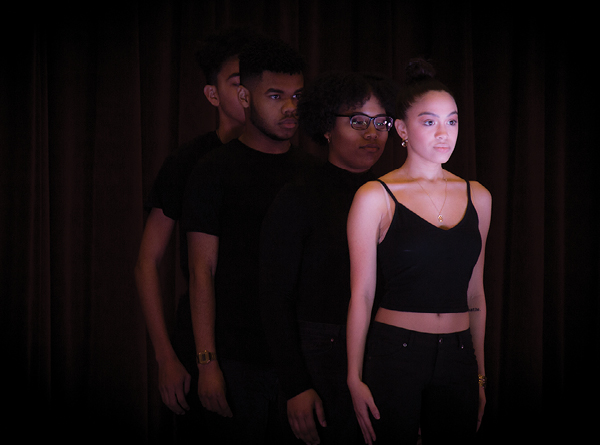
Photo: Matt Cummins
“Before I talk about today, I’d like to talk about all the yesterdays I had leading up to this moment,” said BSU Vice President Marquel Jeffries ’19. “I was the first in my family to go to college. I didn’t know anyone on campus, and there weren’t many people who looked like me.”
He described how as a freshman, he met Brantley at the Involvement Fair and got involved in BSU.
“Justin Brantley told me, ‘You’re the future,’” Jeffries said. “I took what he said and ran with it … Thanks for introducing me to BSU and for changing my life.”
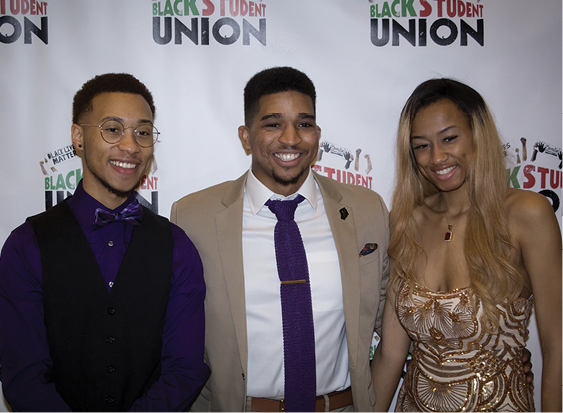
Marquel Jeffries ’19 (Left) Justin Brantley ’15 M’16 and Keonna Wren ’19 were among the hundreds who celebrated the Black Student Union’s 50th Anniversary in the Hewitt Union Ballroom on Feb. 24. Photo: Matt Cummins
Denee Scott ’94 M’98, director of school counseling at Hammond Middle School in Alexandria, Va., shared a similar sentiment about her experience with the student organization.
“BSU was awesome; it was my family on campus,” said Scott, who held leadership roles with the union and was excited to be back on campus—the first time in 10 years—for the celebration. “I made lasting friendships through BSU.”
One of those friends was Oswego Alumni Association Board Member La-Dana Renee Jenkins ’94, who drove from New Jersey early Saturday morning to make it in time for the alumni panel, which was co-sponsored by the SUNY Oswego chapter of the National Association of Black Accountants.
The panel featured Brantley; Tiphanie Gonzalez ’05 M’07, assistant professor in the counseling and psychological services department at SUNY Oswego; Howard Gordon ’74 M’78, executive assistant to the president and special assistant for social equity; and Elaine Flowers ’16, graduate student in higher education administration at SUNY College at Buffalo.
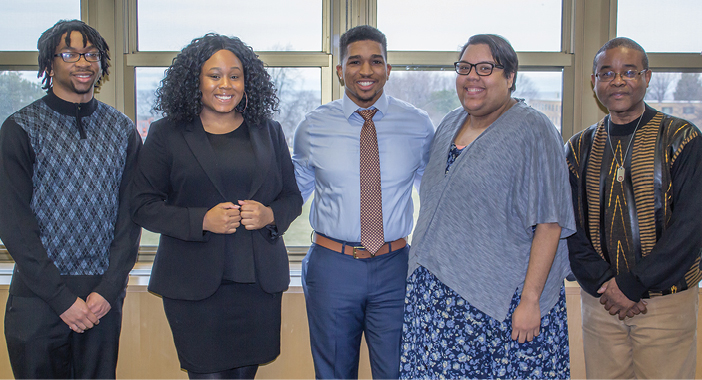
Khalil McIver ’19 (left), director of archives for BSU, moderated an alumni panel during BSU’s 50th Anniversary celebration, which included (from left): Elaine Flowers ’16, Justin Brantley ’15 M’16, Tiphanie Gonzalez ’05 M’07 and Howard Gordon ’74 M’78.
Photo: Matt Cummins
The panelists shared experiences from their personal and professional life and answered questions ranging from their favorite courses and mentors to landing their first job to overcoming obstacles, including micro-aggressions and outright racism.
Gordon described the early days of BSU and the frequency with which “emergency meetings” were called to discuss conflicts or acts of aggression against members of the black community. He talked about the turbulent times that paved the way for future generations, and how he strived to be a role model for his family and for other members of the black community.
He counts among his proudest moments meeting his future wife and fellow Laker, Eva Evans, and the day he walked across the stage at his college commencement.
“I’ll never forget that,” Gordon said. “I could hear my mother shout, ‘Thank you, Jesus!’ real loud in Romney, and my little sister’s voice saying, ‘That’s Howard!’ I knew it wasn’t just for me. It was for other people.”
The panelists also shared tips with panel attendees on how to handle systemic and implicit bias such as off-handed remarks about “filling a quota.”
“When I hear something like that about Affirmative Action, I will often say, ‘Well, thank you. Now, let me show you what I can do,’” said Gonzalez, Ph.D., who is president of the American Counseling Association of New York State and specializes in multicultural counseling.
Gordon advised students not to accept being seen as a deficit.
“Challenge that in a polite and diplomatic way,” he said. “Ask the question. Why do you see me that way? As filling a deficit?”
Keonna I. Wren ’19, current BSU president, said she was pleased with how the 50th Anniversary Reunion turned out and looks forward to seeing what the next 50 years hold.
“A lot of students coming in don’t think our voices are heard,” she said. “But when they get here, they get to talk about issues [of race, diversity and the black experience]. That’s how I think we’ve lasted so long, because we do have a voice and we do talk about issues and students do feel heard. The Black Student Union will be around for another 50 years because of the importance it holds on this campus.”
While BSU’s future has yet to be written, the first 50 years of its existence has made a difference in many lives. The anniversary prompted Jim Gordon and Hancock to reflect on their time at Oswego.
“Our incredible experiences of being on the Oswego campus from 1969 to 1973 created a lifelong toolkit that we each could draw upon to navigate the challenges in both our professional and personal relationships,” Hancock said. “We are amazed on how often we reached back to the memories of our Oswego-era experiences and the brotherhood that was forged that we enjoy even more in retrospect.
“We marvel at the evolution of the campus over the years and are exceptionally proud of how Howard Gordon has played a key role in nurturing BSU while in its infancy, which now has resulted in a strong diverse student body and is part of the DNA of the Oswego campus.”
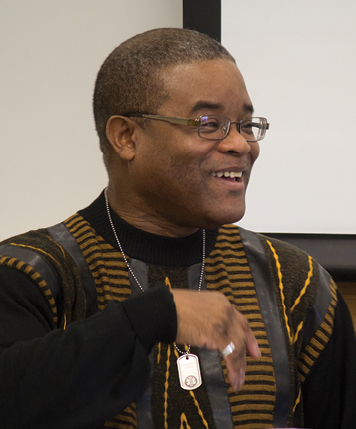
Howard Gordon “74 M’78
Photo: Matt Cummins
More from Featured Content
Vision for the Future
VISION for the Future Peter O. Nwosu began his tenure as the 11th president of SUNY Oswego, building on the solid …
Envisioning the Potential in All Students
ENVISIONING the Potential in All Students Educator donates $2 million in recognition of his Oswego education, in support of future teachers Frank …
A Vision of Support
A VISION of Support Award-winning principal makes an impact on her school through her positivity and commitment When Nicole Knapp Ey ’02 …







